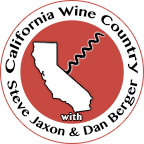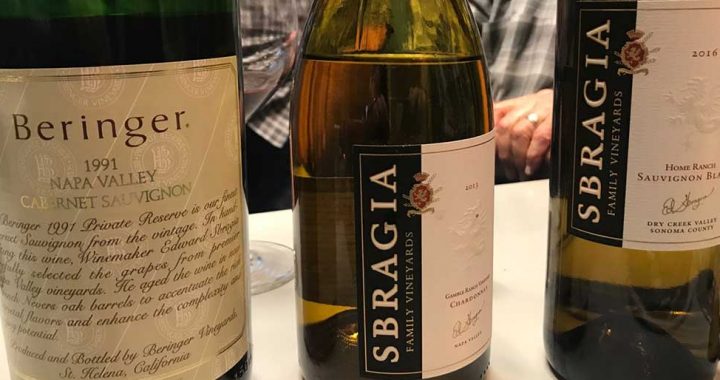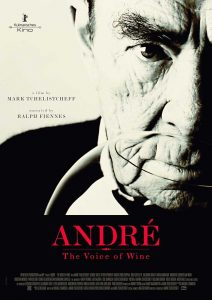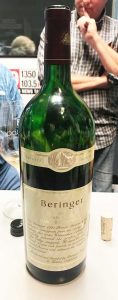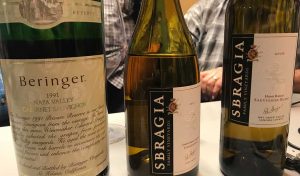Podcast: Play in new window | Download (Duration: 43:16 — 19.9MB) | Embed
Subscribe: Apple Podcasts | RSS | More
Sbragia Family Vineyards and Mark Tchelistcheff join Steve Jaxon, co-host Dan Berger, Tom Simoneau and Barry Herbst today.
Ed Sbragia of Sbragia Family Vineyards is introduced, with his son Adam. Ed was the winemaker at Beringer Winery for a long time but now he has started his own family winery.
Mark Tchelistcheff is the grand nephew of the great André Tchelistcheff, widely known as the godfather of wine in California. He has produced a documentary film about his great uncle, called André, The Voice of Wine, which will debut at the Mill Valley Film Festival next week.
André Tchelistcheff was 92 years old when he died in 1994. Steve says that over the 8 years of this show, no name has been dropped more than André’s. Mark’s film permiered at the Berlinale, the Berlin International Film Festival, which is one of the three great international film festivals. Out of 600 films that were entered, it was one of 5 that had a gala reception and they brought California wine in for the event.
Steve asks Ed about working for Beringer. He was at Beringer for 32 years, from 1976 to 2008. He started making Sbragia Family wines at in 2001 with their first releases in 2004. Adam first started working at Beringer in 2001 and then followed his father, learning how to make Chardonnay and Cab with his father.
Tom says that after fermentation, he likes to extract every bit of flavor from the wines. They are tasting a 1991 Beringer Private Reserve Cabernet Sauvignon, in a magnum. Tom says it is concentrated and balanced and that this is an example of how long these wines can live. This one is 26 years old and still needs more time. They even age slower in a magnum, as Adam explains surface area to volume ratio. Dan says what is impressive in this wine is the level of fruit. He remembers that it was a good vintage. 1990 and 1991 were back-to-back excellent vintages. This one really shows that. Dan reminds us that in those days that wine would not get released until 1995, as they were on a four-year release cycle. Today wines get released after 2 and a half years. Ed says that most of the vineyards for this wine were from high in the hills, where the vines had to struggle and then produced very intense wines.
Dan says that despite it being 26 years old, it is still a baby and will still age well from this point. That’s why Steve calls him Dan “Lay it Down” Berger, the most patient wine collector in the world.
Steve reads that André Tchelistcheff was America’s most influential post-prohibition winemaker. Mark mentions the different spellings and pronunciations of the name, in different languages and countries where he lived, but that when he worked with Ralph Fiennes on the narration, they settled on the Russian pronunciation, “chel-LEEST-cheff” more or less. Mark describes going to live in Russia to get André’s “terroir” and how he worked with a top Russian composer and orchestra for the music. He even found the original 1925 Cadillac in which George de la Tour drove André drove over the Golden Gate Bridge in 1938 when he first arrived here.
It took him ten years to produce the movie, with financing from different sources, in cluding some important winemakers who are in the film and who were touched by André. He hopes that his spirit of sharing comes through in the movie. He got production funding from some important wine makers and he was able to spend time with people, with the winemakers who made the wine, to remember André.
Ed and Adam Sbragia have brought a Chardonnay, which is Steve’s favorite wine.
Ed was working at Foppiano Wine Co in 1975, when André was a consultant up at Simi Winery. He got a pink powder at the bottom of a bottling tank. It had been filtered and was clean. He called André to ask about it and he said it was yeast. He looked underneath and said, “Hmm. Pink yeast.” Another time he had to give a history of the Napa Valley in front of André and an audience. He somehow managed.
Next they taste a 2013 Gamble Ranch Chardonnay. Ed explains that he has used the same Block 15, same vineyard, with black clay soil. It’s between Yountville and Oakville. It’s a slightly warmer area for Chardonnay but it produces a massive wine.
Dan says Chardonnay is red wine with no color. It’s fermented in brand new barrels, 15-18 months. He used to stir the lies once a month, now his son Adam does it once a week, and they top off the barrel.
As Steve wipes up a little wine spill, his first in 9 years, he asks Ed to talk about their slogan, “One foot in Napa, one foot in Sonoma.” Adam lives in the same house his father and grandfather lived in. It is at the end of Dry Creek Valley. His great grandfather came from Italy in the 1880s, one of the earliest. He got degrees from UC Davis and Fresno St., and he worked in every area of winemaking, “on the tractor” and “in the winery.” They have access to a lot of single vineyards on both sides, which he describes.
Dan says this wine needs 3-5 more years. Ed says he has some that are 10 years old and still need time.
Tom says he’s a red wine guy but when he drinks whites he wants character in it and this delivers. Dan says it’s complicated and expensive to make. 100% new French oak, the barrel time and bottle aging all add costs to the production.
The film is called André the Voice of Wine. There is a film clip where he is asked, “How will you be remembered?” He answers, “maybe as the voice of wine.” Mark says he’s a little nervous because a lot of the winemakers he interviewed for the film will be attending the screening at the Mill Valley Film Festival.
André was born in Russia into an aristocratic family in 1901. His father was a supreme court judge. The family was well to do and always had wine and champagne, which were mainly French wines, there at that time. He was also given a vineyard as a young man, in Crimea. So he was connected to wine from an early age. He survived three revolutions, left for dead, and he was saved by a Cossack. He lost everything and left Russia with the other troops who escaped Russia into Constantinople. He fought in the Bulgarian Civil War then went to University in Brno, Czech. His first wine was Tokay. He was a farmer at heart, but his farm was destroyed by a hailstorm the size of quail eggs and his livestock was killed. Because of that he went back to wine. He attended the Pasteur Institute in Paris. He came to California in September 1938. He was always very modest about what he did, but the story is that George de la Tour went to France to find a top enologist, so he asked the faculty at Paris for the best winemaker and recommended André. He has copies of all the original telexes of the correspondence to get him here. He came by train across America and was picked up in San Francisco. He thought Beaulieu was the most beautiful place ever. There were servants in white gloves. But after a year he almost left, because of the state of the winery. He had to be convinced to stay. They had rusty iron pipes and he rebuilt everything into clean modern equipment. He taught how to make wine and also viticulture. Dan says he was way ahead of his time: “Prohibition ended in 1933 and André got here in 1938. We were still gearing up.” Developing the wine business was slow but he did more than anyone. He was also the first one to open a lab in Napa Valley. He took the winery out of cobwebs and made it work.
Mark says he shot the movie to show it in the theaters. The cameras and sound are made to look and sound great in a theater. So the visual experience is worth seeing it in a theater, instead of on a small screen.
Tom Simoneau wants to taste the 2013 Monte Rosso Cabernet Sauvignon. He considers it the Gran Cru of Sonoma County, at about 1000 feet in the foothills on the east side.
